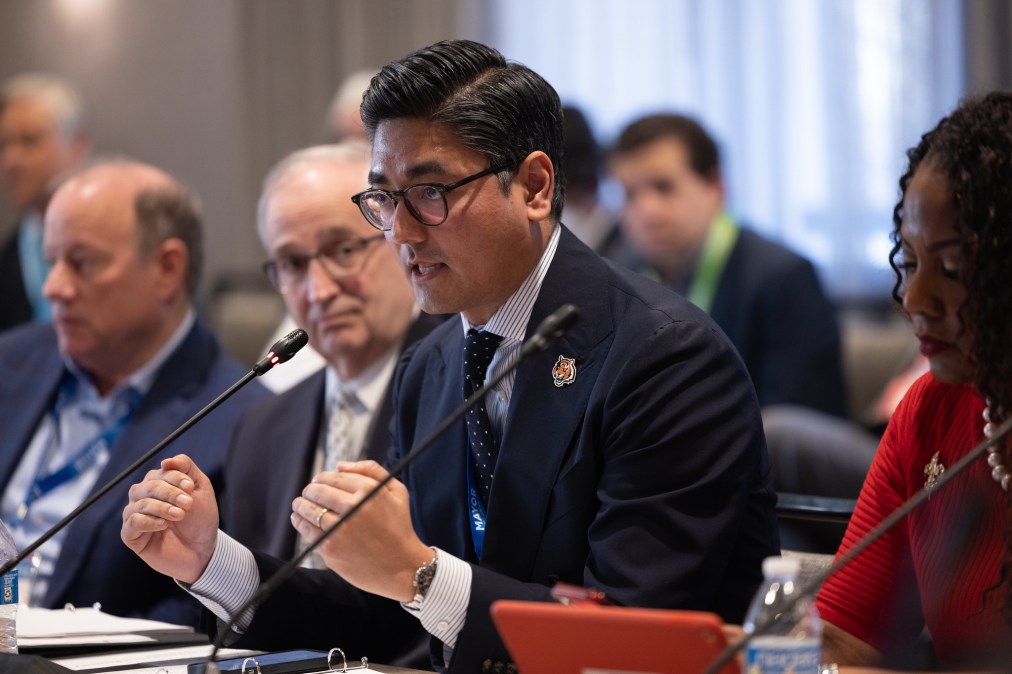With ‘storm clouds’ in Congress, mayors urged to use up Rescue Plan funds

While the $350 billion in recovery funds offered to states and cities from 2021’s American Rescue Plan Act don’t run out for another three years, local government leaders should consider speeding up how they commit that money as Congress enters an era of divided control, Detroit Mayor Mike Duggan told a roomful of his counterparts from around the country Wednesday.
Duggan, leading a session on the Biden administration’s signature pandemic-relief program at a U.S. Conference of Mayors meeting in Washington, said mayors should move quickly to reduce the possibility that unspent Rescue Plan dollars land on the chopping block if Congress demands major spending cuts.
“There are storm clouds on the horizon,” he said. “If the choice is between cutting Social Security and Medicare or unobligated ARPA funds, what do you think the choice is going to be?”
So far, more than $127 billion out of the Rescue Plan’s State and Local Fiscal Recovery Fund has been committed to state and local projects — including replacing revenue lost during the pandemic, IT modernization initiatives, broadband expansion and transportation and infrastructure improvements — with $93 billion out the door, according to the U.S. Treasury.
Of that money, about $25 billion has been spent on infrastructure, including broadband projects, Jacob Liebenluft, the Treasury’s chief recovery officer, said at the conference. But he also said the recovery fund — which requires recipients to identify eligible projects by the end of fiscal 2024 and spend the money by the end of 2026 — is now “entering the third quarter.”
“Perhaps this is the most crucial moment,” Liebenluft said.
For many mayors, the Rescue Plan funds were a lifeline out of the depths of COVID-19’s economic and social impacts.
“We would have had to fire so many people the city would’ve failed to provide basic services to residents,” said Cincinnati’s Aftab Pureval.
Pureval said his city has been using the $300 million it got to create a “city of the future” with projects aimed at improving digital equity, housing inequality and municipal hiring.
But, he said, “these funds won’t last forever.” Cincinnati expects to face a $50 million deficit in 2025, Pureval said, adding that he’s asked executives from major local businesses — including Proctor & Gamble, Kroger and the NFL’s Cincinnati Bengals — to do a “deep dive” on the city’s economic strategies and make policy recommendations.
“We have to, in a very short period of time, need to make hard decisions to right size our budget,” he said.
While the $350 billion in recovery funds have been allocated to states and local governments, Detroit’s Duggan told StateScoop that the best way to avoid the threat of cuts is to show tangible results from the federal aid.
“Everybody should be conscious that we’re swinging at a time in this country where there’s more focus on the deficit, and it’s going to be really important for us to show these projects are critical and providing great value so they don’t become items that anyone wants to start reducing,” he said.






